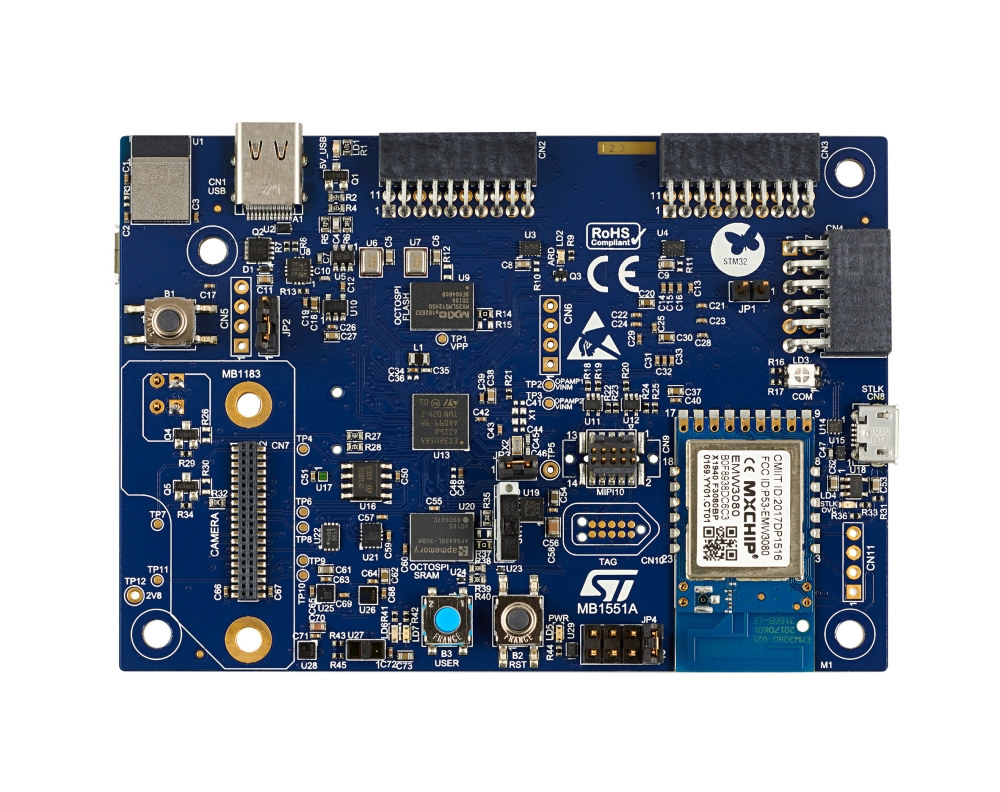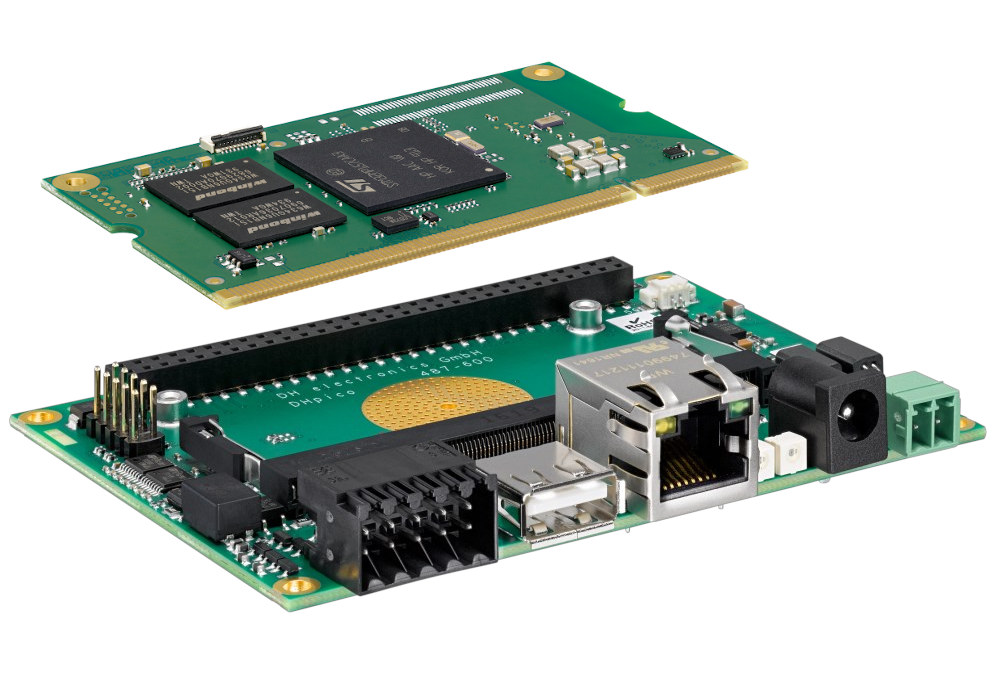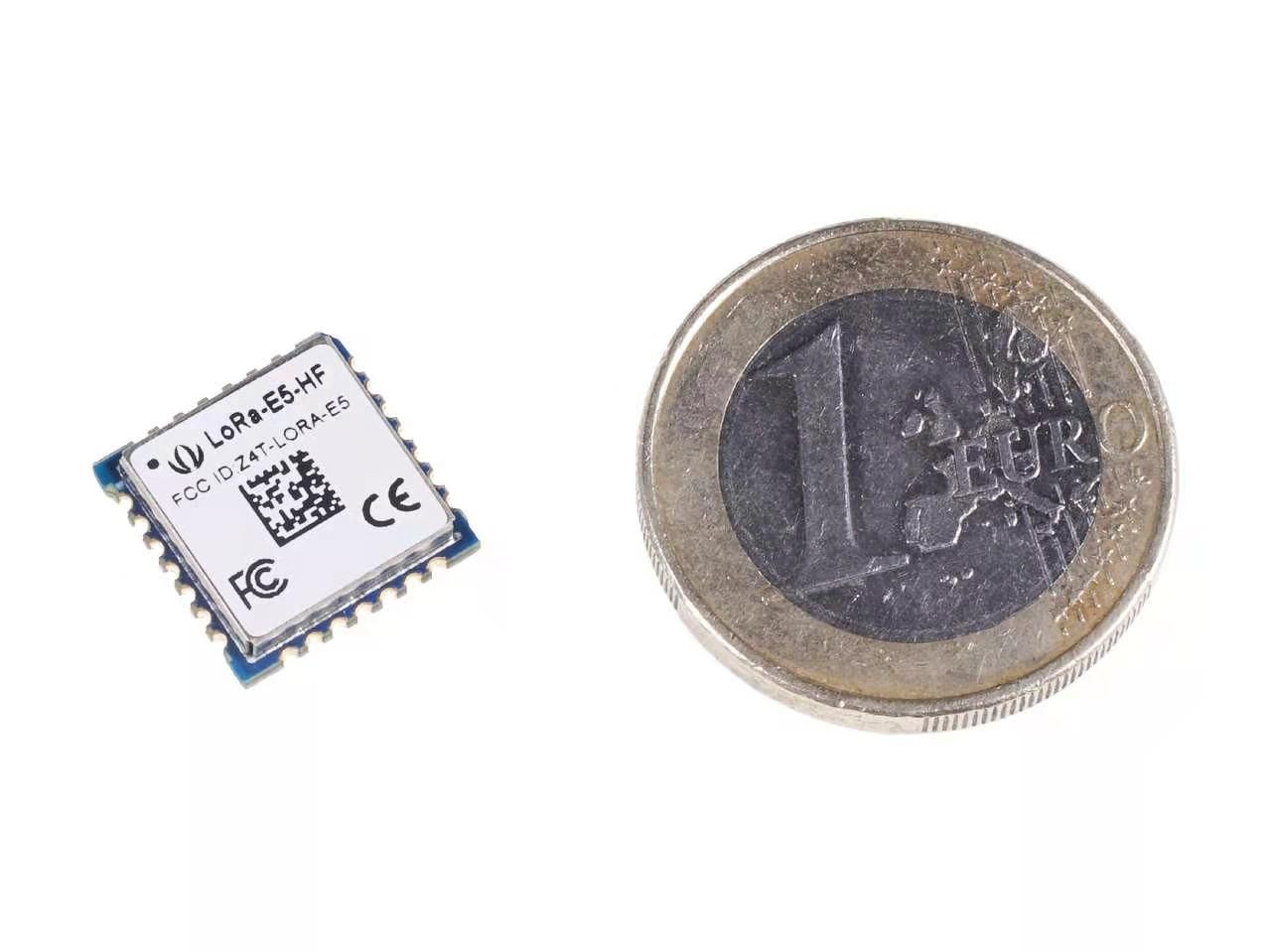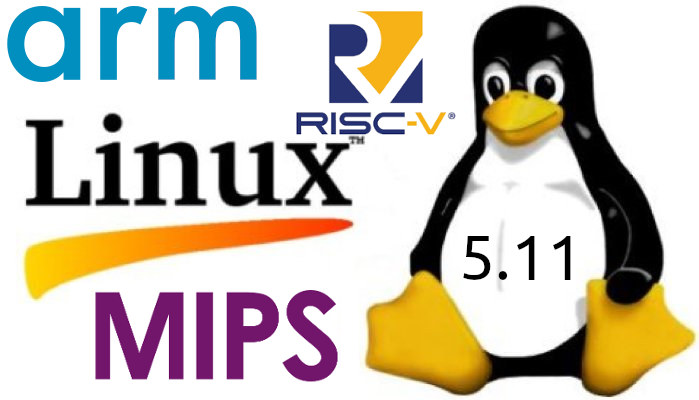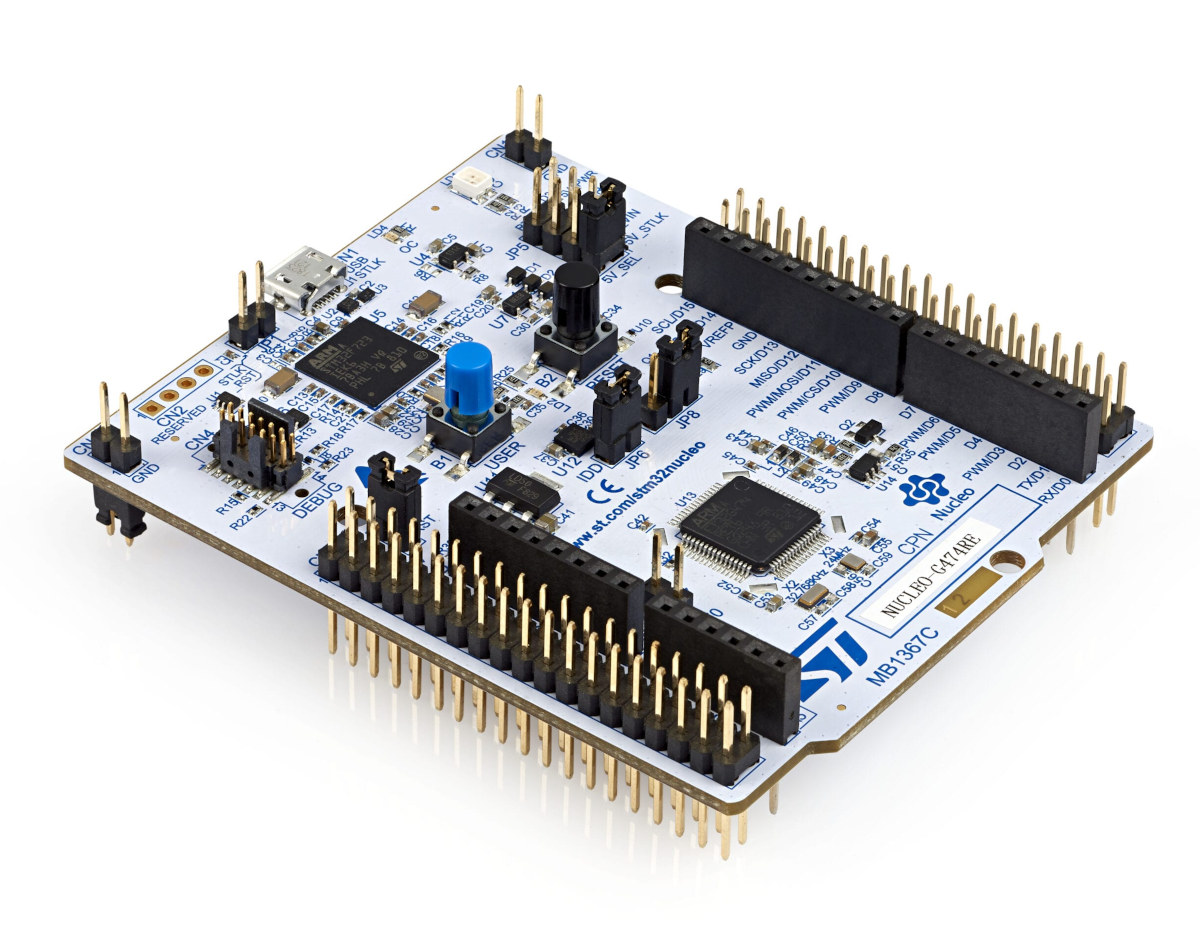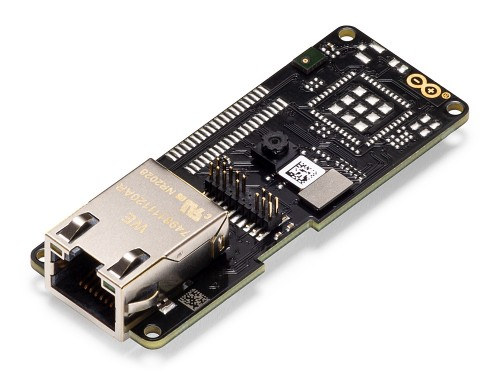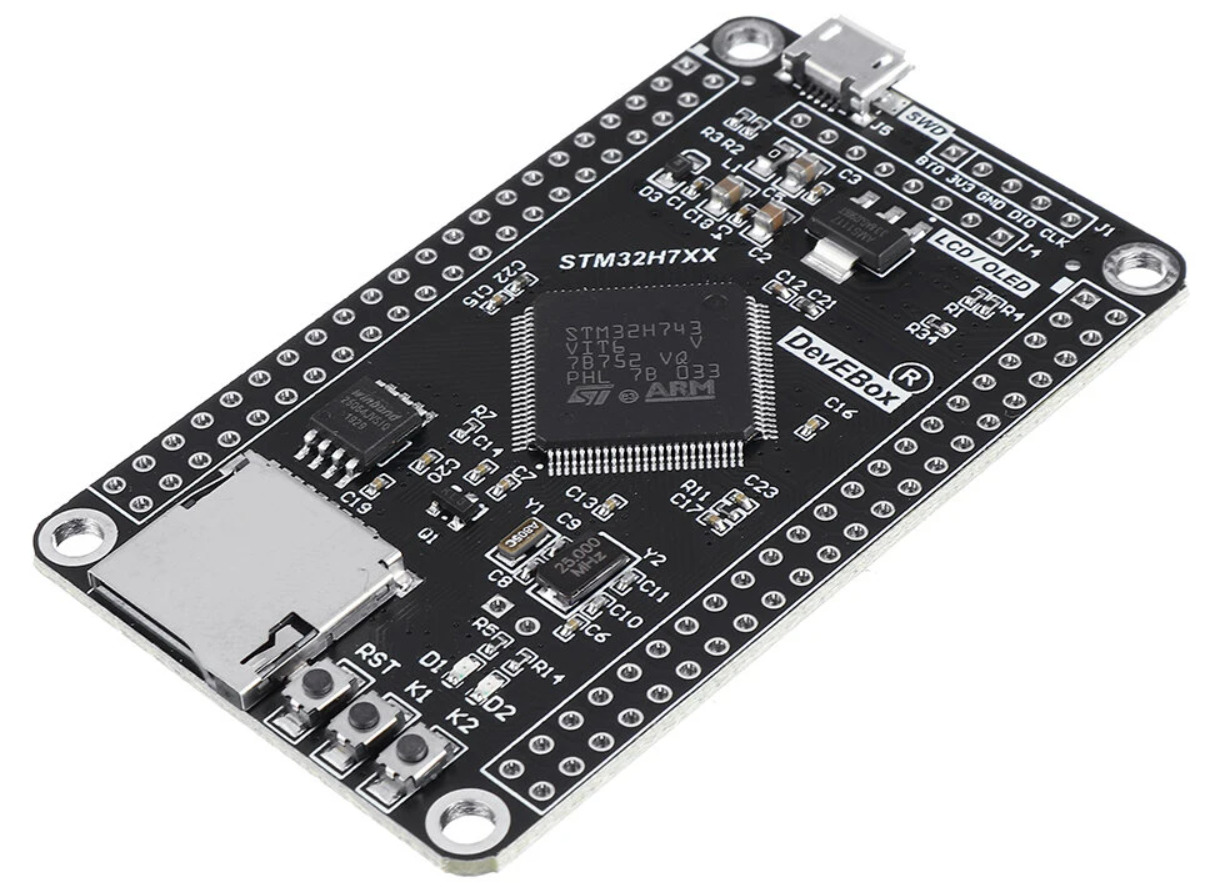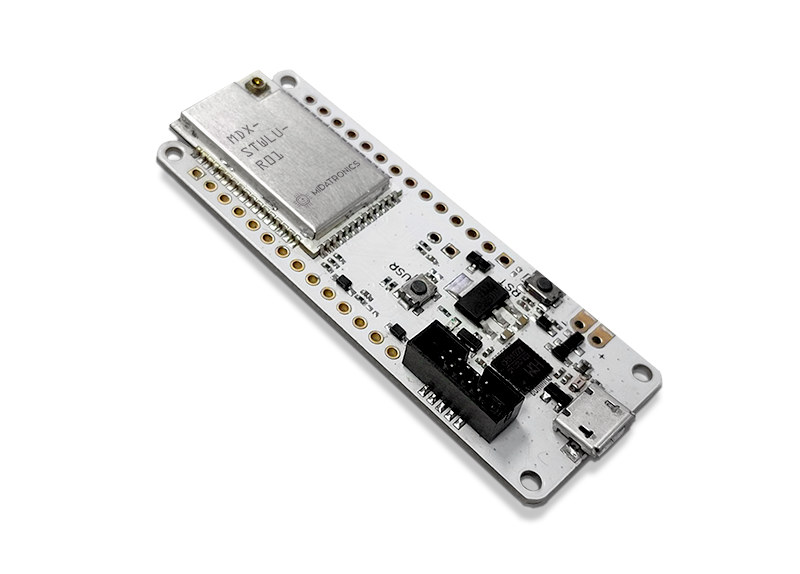The first STM32 MCU based on Arm Cortex-M33 core was the ultra-low-power STM32L5 microcontroller, and the company is now following up with the STM32U5 series also designed for smart applications including wearables, personal medical devices, home automation, and industrial sensors. The new family has a higher 160 MHz clock speed, up to 2048 KB flash, up to 786 KB RAM, a 2D graphics accelerator, several peripherals have been upgraded, and a new autonomous mode lets DMA and peripherals keep working while most of the device sleeps in order to save power. STM32U5 MCUs also integrate additional hardware security features, and are manufactured using a 40nm process, which the company says is the most advanced process suitable for microcontrollers. Just like for the STM32L5 family, there are two product lines in the STM32U5 series which mostly differ in their security features: STM32U575 with 1024 to 2048 KB of flash memory, 786 […]
STM32MP1 Linux SoM fits into Pico-ITX carrier board
DH electronics DHCOM STM32MP1 is an STMicro STM32MP1 Cortex-A7/M4 system-on-module (SoM) following the company’s SO-DIMM-based DHCOM standard, and capable of running Linux with Etnaviv GPU drivers. The SoM is compatible with two DHCOM carrier boards from the company, namely DH PDK (Premium Developer Kit) for development, and DH PicoITX2 Pico-ITX board for direct integration into products. DHCOM STM32MP1 SoM DHCOM STM32MP1 specifications: SoC – STMicro STM32MP15x with up to two Arm Cortex-A7 core up to 650 MHz, one Arm Cortex-M4 up to 209 MHz, Vivante 3D GPU @ up to 533 MHz with OpenGL ES 2.0 support System Memory – 256, 512, or 1024 MB 32-bit DDR3 DRAM Storage 4, 8, or 16 GB eMMC flash 2 MB boot flash 256 bytes EEPROM MicroSD card socket on module Connectivity – WiFi 4 IEEE 802.11 a/b/g/n, 802.11j (hosted mode) with dual band, Bluetooth 5.0 (BR/EDR/BLE), PCB antenna and U.FL antenna connector […]
$10 LoRa-E5 STM32WL module offers LoRaWAN networking in a 12x12mm package
Over the years, we’ve seen many LoRa modules combining STM32 microcontroller with Semtech SX12xx wireless transceivers, so that’s probably why STMicro decided to create the first LoRa SoC with STM32WL that was launched last year. I’ve just been informed a tiny (12x12mm) LoRa-E5 module based on STM32WL LoRa SoC working with 868 MHz and 915 MHz bands had recently launched on Seeed Studio for $9.90. LoRa-E5 key features and specifications: SoC – STMicro STM32WLE5JC Arm Cortex-M4 MCU @ 48 MHz with 256 KB flash memory, 64 KB SRAM, SX126x LoRa radio LoRa connectivity Tx power – 22dBm @ 868/915MHz -136.5dBm sensitivity for SF12 with 125KHz BW 158dB link budget Embedded LoRaWAN protocol, AT command Frequency ranges – EU868, US915, AU915, AS923, KR920, IN865 I/Os – 3x UART, 1x I2C, 1x 12-bit ADC, 1x SPIO Supply Voltage – 3.3V Power Consumption As low as 2.1uA sleep current in WOR mode Tx […]
Linux 5.11 Release – Main Changes, Arm, MIPS & RISC-V Architectures
Linus Torvalds has released Linux 5.11 just in time for… “Valentine’s Day”: Nothing unexpected or particularly scary happened this week, so here we are – with 5.11 tagged and pushed out. In fact, it’s a smaller-than-average set of commits from rc7 to final, which makes me happy. And I already have several pull requests lined up for tomorrow, so we’re all set for the merge window to start. But in the meantime – and yes, I know it’s Valentine’s Day here in the US – maybe give this release a good testing before you go back and play with development kernels. All right? Because I’m sure your SO will understand. Linus Last time around, Linux 5.10 was an LTS release that added EXT-4 performance enhancements, improved post-Spectre performance, as well as the enablement of BCM2711 (Raspberry Pi 4) display pipeline, among other many changes. Some of the notable changes in […]
New STMicro STM32G4 MCUs target cost-effective motor control systems with up to 512KB flash
STMicro introduced the STM32G4 family of mixed-signal microcontrollers in May 2019 for e-mobility (e.g. e-bikes), digital power supplies, advanced motor controls, lighting, and building-automation products. The Arm Cortex-M4 based microcontrollers clock up to 170 MHz, and include new hardware mathematical accelerators to boost processing of applications using Cordic (Coordinate Rotation Digital Computer) and Filtering functions to support increased performance and energy efficiency. This enables faster and more efficient calculations for energy-saving motor controls and frees up the core to receive more sensor data and control additional user functions. The STM32G4 Series of mixed-signal microcontrollers have three lines of products: The STM32G4x1 Access line – general-purpose microcontrollers with an entry-level set of analog peripherals The STM32G4x3 Performance line – general-purpose microcontrollers with the maximum number of analog peripherals The STM32G4x4 Hi-resolution line with high-resolution timer and complex waveform builder plus event handler (HRTIM) for digital power conversion, such as digital switched-mode […]
Arduino Portenta H7 Gets Embedded Vision Shield with Ethernet or LoRa Connectivity
[Update January 28, 2021: The LoRa version of Portenta Vision Shield is now available] Announced last January at CES 2020, Arduino Portenta H7 is the first board part industrial-grade “Arduino Pro” Portenta family. The Arduino MKR-sized MCU board has plenty of processing power thanks to STMicro STM32H7 dual-core Arm Cortex-M7/M4 microcontroller. It was launched with a baseboard providing access to all I/Os and ports like Ethernet, USB, CAN bus, mPCIe socket (USB), etc… But as AI moves to the very edge, it makes perfect sense for Arduino to launch Portenta Vision Shield with a low-power camera, two microphones, and a choice of wired (Ethernet) or wireless (LoRA) connectivity for machine learning applications. Portenta Vision Shield key features and specifications: Storage – MicroSD card socket Camera – Himax HM-01B0 camera module with 324 x 324 active pixel resolution with support for QVGA Image sensor – High sensitivity 3.6μ BrightSense pixel technology […]
DevEBox STM32H7 Development Boards are made for Factory Automation
When it comes to STMicroelectronics’ STM32H7 series, there are three product lines- Dual-core lines, Single-core lines, and Value lines. ARM Cortex-M7 based – STM32H7 MCU series is capable of delivering 1327 DMIPS/ 3224 CoreMark. These MCUs are designed for factory automation (HMI, process control, power management), connectivity & security (Alarm panel, Wireless Modules). To continue with the growth of the STM32H7 series, we have China-based MCUdev DevEBox’s STM32H7XX-M development boards taking a single-core line and a value line module. The two STM32H7XX-M development boards use STM32H743VIT6 and STM32H750VBT6 core modules. The STM32H743VIT6 comes from a single core line that offers ARM Cortex-M7 gets up to 2 Mbytes of dual-bank flash memory and 1 Mbytes of RAM. While the STM32H750VBT6 module from the value line is one of the cost-effective STM32H7 devices featuring 128 Kbytes of flash memory. STM32H7 Development Boards These boards from MCUdev measure approximately 40mm x 68mm in […]
Arduino MKR inspired MKR Windy board is equipped with STM32WL LoRa SoC
We recently wrote about MKR SharkyPro BLE, Zigbee, OpenThread development board based on STM32WB55 MCU and following Arduino MKR form factor, but it turns out Midatronics has also launched a similar-looking board with LoRa connectivity. MKR Windy board features the company’s Windy STM32WL module with an uFL connector and following the same Arduino MKR layout. MKR Windy specifications: Wireless Module – Windy module (MDX-STWLU-R01) Wireless MCU – STMicro STM32WLE5JX/STM32WL55JX Arm Cortex-M4 MCU @ 48 MHz with up to 256KB flash, 64KB SRAM Connectivity Semtech SX126x sub-GHz radio with LoRa, (G)FSK, (G)MSK, and BPSK modulation, 150 MHz to 960 MHz frequency range RX Sensitivity: –123 dBm for 2-FSK, -148 dBm for LoRa Antenna – uFL connector for external antenna Supply Voltage – 1.8 V to 3.6 V Dimensions : 16 x 26 mm Temperature Range – 40°C to + 85 °C USB – 1x Micro USB port for power and programming […]


